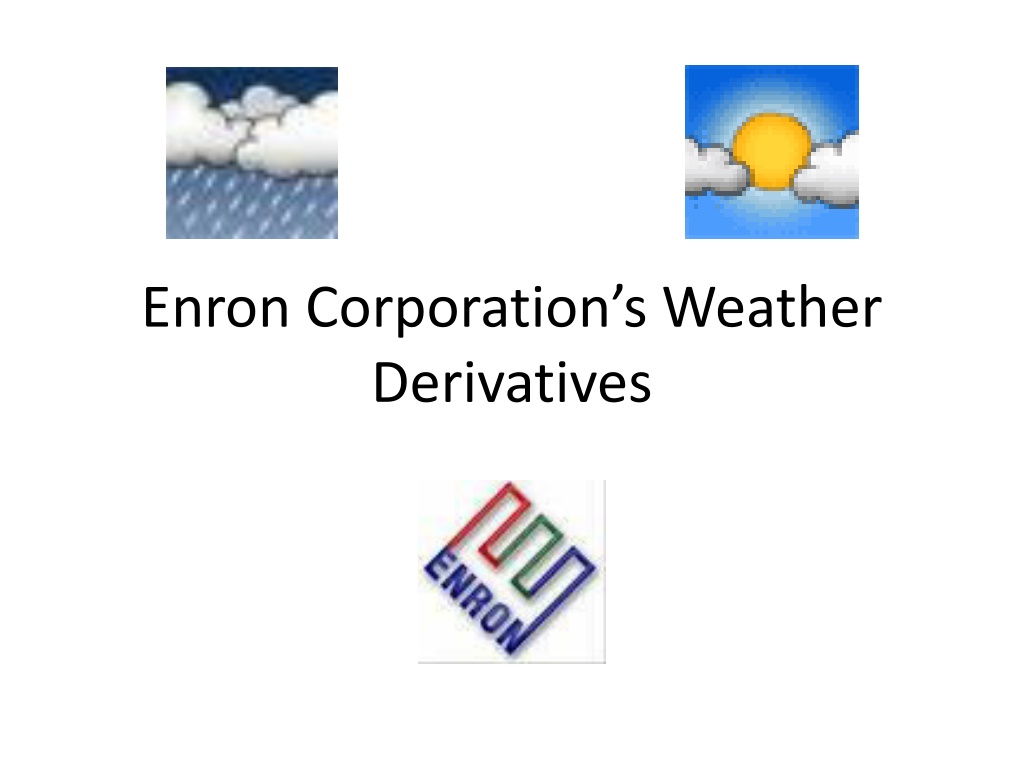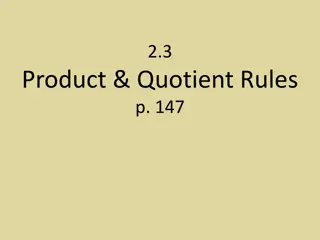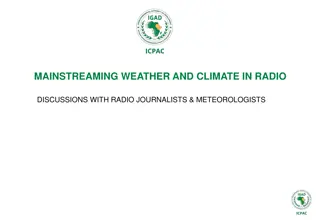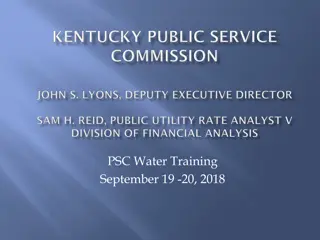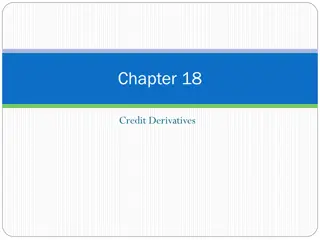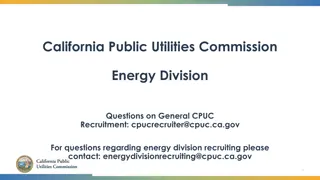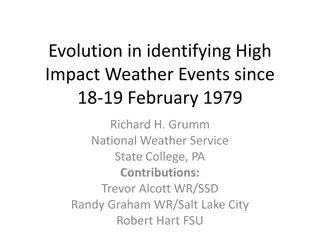Weather Derivatives and Risk Management in Utilities
Explore the impact of weather on businesses, specifically utilities, and how weather insurance products can help mitigate risks. Learn about Pacific Northwest Electric's challenges in the face of changing weather patterns and the use of weather protection products. Discover the utility lingo, possible weather protection products, and a specific contract analysis with a payoff diagram.
Download Presentation

Please find below an Image/Link to download the presentation.
The content on the website is provided AS IS for your information and personal use only. It may not be sold, licensed, or shared on other websites without obtaining consent from the author. Download presentation by click this link. If you encounter any issues during the download, it is possible that the publisher has removed the file from their server.
E N D
Presentation Transcript
Enron Corporations Weather Derivatives http://www.google.com/images?q=tbn:t3ugOmwYP7xF5M::www.negotiationlawblog.com/enron.jpgh=78w=80usg=__9hO_6XKN1GTyzr48KIGZMSN7D6Q=
Who is PNW and what problem is it facing? Pacific Northwest Electric Facing the 2000-2001 winter season Recent warmer-than-average winters Hurts revenues Deregulation doesn t allow them to pass costs on to customers PNW s stock has lagged benchmarks Borrowing costs increasing because lower rating
Example of how weather can affect a business adversely Too warm of winters reducing a utility s revenues from less heating usage Too mild of summer reducing a utility s revenues from less air conditioning usage Storms keeping shoppers indoors Lack of snow affecting ski resorts Too rainy / too cool summer affecting beach destinations Too hot of a summer might lead to too much demand of a product and stockouts might occur (turn people away)
How could weather insurance help? Smooth Revenues Cover Excess Costs Reimburse lost-opportunity costs Stimulate Sales Diversify investment portfolios
Some Utility lingo Heating Degree Days (HDD) Cooling Degree Days (CDD) Based on deviations from 65 degrees Fahrenheit
Possible weather-protection products Floor (too warm of winter and HDDs fall) Ceiling Cap (too much snow city expenses) Collar (long one contract, short another) Swap (receive fixed revenue stream; pay floating payments based on HDD/CDD) Futures Contract (cash settlement based on several airport temps)
The contract at hand (Exhibit 1) Draw its payoff diagram (to PNW) $ Payoff 800,000 Max Payout $20,000 notional amount per HDD 800,000 800,000 / 20,000 = 40 400 40 = 360 is the HDD where they would cap out at. HDDs 360 400
Pros and Cons of this contract Pros Cons Reduce Downside Risk Truly serious outcomes only partially covered Keep Stock Price Less Volatile Premium has to be paid Contribute to Better Bond Rating Reduce the cost of financing
Can Black-Scholes be used to price? No. Black-Scholes assumes a random walk in the price of the underlying asset over a period of time Here, we have a cumulative level as our underlying, so their walk through time is not random. It is based on prior days events. A simulation tool like Crystal Ball would have to be used to simulate possible payouts under a large number of trials. An expected payout would then be found and a premium set above that level. You need to look at a reasonably large sample of historical records to find the average HDDs and CDDs and their standard deviations. Then you need determine if there is a trend to consider.
